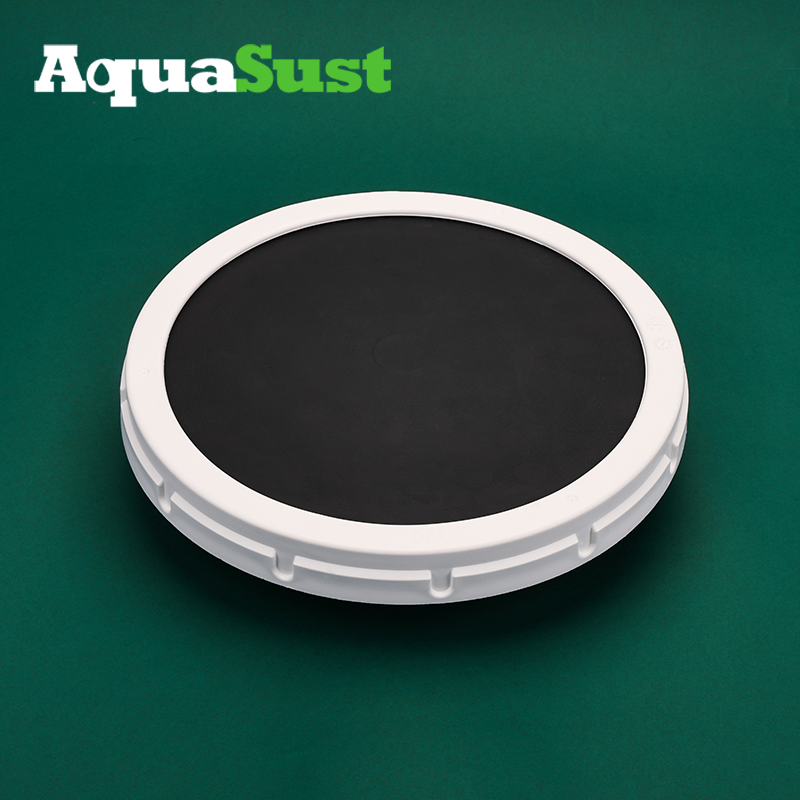 +86-15267462807
+86-15267462807
As an efficient aeration device, aeration diffusers play an indispensable role in the water treatment process. By evenly dispersing air into the water, aeration diffusers can:
Increase dissolved oxygen content: Provide sufficient oxygen for aerobic microorganisms and accelerate the degradation of organic matter.
Promote mixing: Accelerate the oxidation and decomposition of harmful substances in water and improve treatment efficiency.
Remove odor: Effectively remove volatile organic matter in water and improve water quality.
As a manufacturer focusing on water treatment, we are deeply involved in the field of aeration diffusers and have developed a series of efficient and reliable products, including:
Disc aerator: Compact structure, high aeration efficiency, widely used in sewage treatment plants.
Tube aerator: Easy to install, simple to maintain, suitable for various water treatment processes.
Spiral mixing aerator: Combines aeration and mixing functions to improve treatment efficiency.
| Aerator Type | Characteristics | Advantages | Disadvantages | Typical Applications |
| Fine Bubble Diffuser | Small pore size, fine bubbles | High mass transfer efficiency, good oxygen utilization | Susceptible to clogging, higher cost | Activated sludge process, membrane bioreactor |
| Coarse Bubble Diffuser | Large pore size, coarse bubbles | Simple structure, low cost | Lower mass transfer efficiency, prone to clogging | Primary sedimentation, oxidation ditch |
| Membrane Aerator | Microporous membrane, very fine bubbles | Extremely high mass transfer efficiency, no clogging | High cost, susceptible to damage | High purity water treatment, MBR process |
| Mechanical Aerator | Uses mechanical devices to introduce air into water | Large aeration capacity, suitable for high flow rates | High energy consumption, noisy | Oxidation ponds, aeration tanks |
| Surface Aerator | Creates turbulence on the water surface | Simple structure, low cost | Lower oxygen transfer efficiency, susceptible to weather conditions | Oxidation ponds, lagoons |
Poor water quality and more suspended matter: Choose a porous aerator or mechanical aerator that is wear-resistant and not easy to clog.
Requires high dissolved oxygen and large processing volume: Choose microporous aerators or membrane aerators with high aeration efficiency and high oxygen utilization rate.
High noise requirements: Choose membrane aerators or low-noise mechanical aerators.
Limited budget: Choose low-cost porous aerators or mechanical aerators.

Activated sludge method: Microporous aerators and membrane aerators are common choices, which can provide sufficient oxygen and promote the degradation of organic matter.
Biofilm method: Both porous aerators and microporous aerators can be used, and the appropriate aeration intensity can be selected according to the thickness and load of the biofilm.
Oxidation pond: Mechanical aerators are often used for aeration, which can quickly increase the dissolved oxygen in the water.
MBR process: Membrane aerators are the first considered choice, which can provide high-purity oxygen and ensure the long-term stable operation of the membrane.
Regular inspection: Check whether the aerator is installed firmly, whether there is damage, deformation, etc.
Cleaning: Clean the aerator regularly, remove blockages, and ensure smooth ventilation.
Replacement: Replace aging and damaged parts in time.
Control aeration volume: Adjust aeration volume according to water quality changes to avoid over-exposure or under-exposure.
With the continuous advancement of water treatment technology, aeration diffusers are also developing in the following directions:
Intelligence: Remote monitoring and control are achieved through Internet of Things technology to improve operating efficiency.
Energy saving: Use new materials and structures to reduce energy consumption.
Miniaturization: Develop aeration equipment suitable for small water treatment systems.